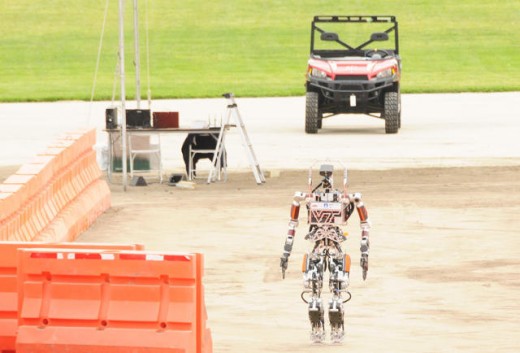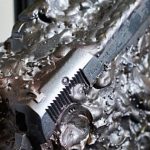South Korean workforce Takes $2 Million high Prize At DARPA Robotics problem
DARPA needs to inspire the introduction of robots in a position to disaster recovery. but there is an extended technique to go and a lot of work still to do.
June eight, 2015
members of team KAIST jumped up and down and grabbed each different in an emphatic embrace as their robotic, known as DRC-Hubo, placed its 2nd foot atop the platform. The authentic raised his arm in the air.
Mark it: eight points. In a dominating time of only a hair over 44 minutes. even if several major teams nonetheless had but to take the direction, the DARPA Robotics problem (DRC) looked like it was once all however over.
And it used to be. with the aid of the end of the day Saturday, the 2d and remaining full day of the finals of a 3-year-long seek for a champion, workforce KAIST, from the Korea developed Institute of Science and technology, had claimed the $2 million top prize and permanent rights to brag that it had bested worthy opponents from august establishments like Carnegie Mellon university, the Massachusetts Institute of expertise, NASA’s Jet Propulsion Laboratory, and others the world over.
DARPA, the federal defense developed analysis projects company, launched the competitors after robots sent to assist tackle the catastrophe on the Fukushima nuclear facility in Japan in the wake of that united states of america’s horrific 2011 earthquake and tsunami have been unable to alleviate mounting pressure inside the plant. The explosions that followed left the nearby area a radioactive “no-man’s land,” in keeping with Gill Pratt, the DRC software manager, which “had a profound impact on many people at DARPA.”
Rescue Robots
With the DRC, DARPA hopes to encourage the development of robots able to running “in areas that are designed for people, use tools that are built for humans, and can be controlled with best minimal training by means of people who are now not robotics consultants,” in line with an company document. “attaining these targets would imply that robots might be rapidly put to use helping in human-led response to future emergencies.”
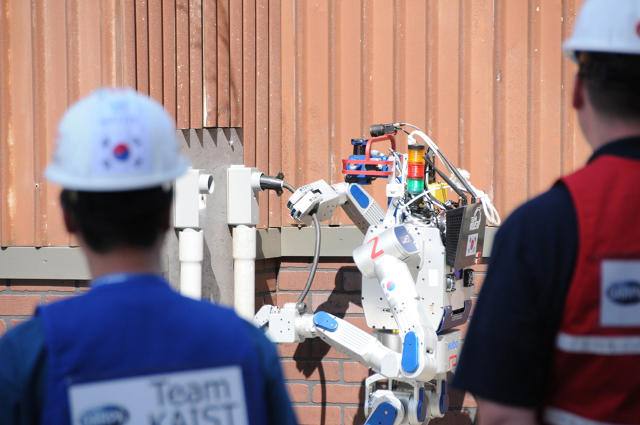
Dozens of teams had participated in past rounds of the competitors, however the very best 24 gathered on the Fairplex, an enormous adventure area east of los angeles, to vie for the crown this earlier weekend. in the end, in entrance of a few thousand folks, including Google CEO Larry page and Tesla and SpaceX CEO Elon Musk, staff KAIST blew away the sector.
each group’s robot got two pictures on the route, trying to attain points by driving a utility vehicle down a dirt track, exiting the car, opening and going thru a door, closing a valve, reducing through a piece of drywall, tackling a surprise job, crossing a container of rubble, after which climbing a brief set of stairs. every job was value a point, for a complete most of eight. successful supposed having probably the most factors, or the very best time in case of a tie.
ending used to be a daunting activity, as evidenced with the aid of the truth that by using the tip, simply three teams collected all eight points. amongst those, group KAIST completed the route in 44 minutes, 28 seconds. operating Man, from crew IHMC Robotics, got here in 2nd and won $1 million with a time of 50 minutes, 26 seconds, and Carnegie Mellon college’s CHIMP grabbed 0.33 position, and $500,000, ending in fifty five:15.
All About instrument And regulate techniques
To the casual observer, it will were hard to tell one of the vital robots aside. Seven teams used Boston Dynamics’ Atlas robot, whereas KAIST and the workforce from the college of Nevada, Las Vegas used the Hubo platform—developed with the aid of the Koreans themselves. in actual fact, the DRC was virtually indubitably extra of a device and keep watch over techniques competitors than a hardware challenge.
“winning first location in this problem doesn’t mean [ours is] the best robot on this planet,” Jun Ho Oh, the leader of crew KAIST, instructed fast company. “It simply way it obtained the best factors, no more, no much less….the item is the steadiness. Some robots have robust power, however less mobility. Some robots have very good [movement], however much less vision, and the physique’s too giant. and some…have superb autonomy, however [are] over-autonomized. So, [winning was about] good balance between supervisory and autonomy.”
That’s needless to say, said Scott Lavalley, some of the Atlas design leads at Boston Dynamics.
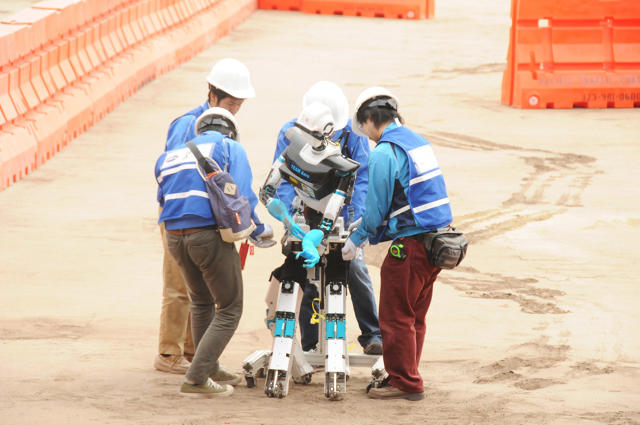
“They’re the entire similar,” Lavalley stated of the many teams competing within the DRC with an Atlas robotic. “they may be able to regulate it with sensors and computing. It’s all controls, all software [which differentiates the teams]. We deliver the hardware, and then it’s as much as them to put in writing device and navigate it through the route.”
after all, many teams believed their approach put them in one of the best place to take the DRC crown. as an instance, Carnegie Mellon college nationwide Robotics Engineering heart’s custom-constructed CHIMP completed the first day as the only robotic with eight factors. Afterwards, the staff’s director, Herman Herman, defined to quick company that what was required to be triumphant was lots of experience and a design tailor-made for the issues at hand.
“What you want is a sturdy [robot], so it could get well if it makes a mistake,” Herman mentioned. “It’s alleged to do a rescue mission. It cannot want to need to be rescued itself.”
Falling Down
staring at the competitors, that fast changed into very clear. One after every other, robots stumbled and fell, frequently in very dramatic fashion, and on a regular basis eliciting a loud groan from the target audience. A video posted of all the falls was once considered greater than 128,000 occasions. It was once funny, however made the point that building and designing robots that may efficiently navigate a route like that of the DRC is extremely arduous. And doing it without humans needing to return in to rescue the rescue robots is a daunting problem.
even if it scored eight points on Saturday, CHIMP didn’t keep away from falling. however Herman argued that probably the most issues that set the robotic apart used to be that its device and hardware design enabled it to get back up with out assist—the only robot on the DRC to do so.
KAIST’s Ho Oh made the identical point after the competition, with the advantage, after all, of getting won with out his robot falling down during its dominating Saturday performance.
“the real disaster was once falling down,” Ho Oh mentioned. “this is about ‘disaster restoration.’ That implies that all of the robots should be free from catastrophe or they have got to get better from [falling] without needing any assist from outside.”
in any other case, he argued, a recovery robot working in a contaminated atmosphere, or one too unhealthy for people to enter, will never have the ability to help somebody.
What was once learned
although the DRC was nominally a contest geared toward advancing the state-of-the-art of using robots for catastrophe restoration, there have been some available who felt that something way more necessary had been completed.
among onerous-core roboticists, there’s a experience that the public, spurred through media hype, is petrified of what robots mean for the long run. Are they coming for our jobs? Are they coming to take over? Few storylines in common media, with perhaps Disney’s giant Hero 6 as a up to date exception, are about robots helping individuals.
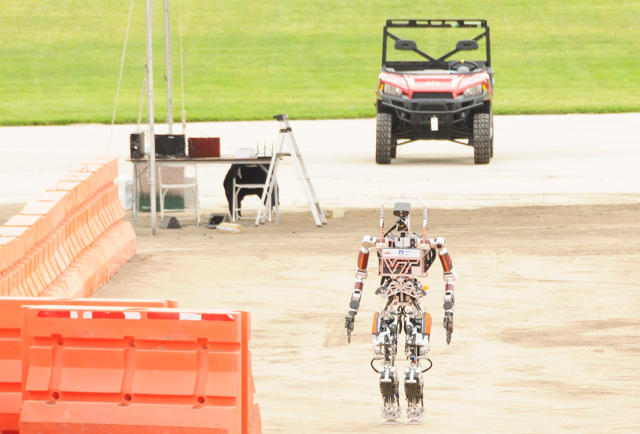
but, stated DARPA’s Pratt, talking of the robots that competed in the DRC, “These aren’t small machines, and you might suppose [that] the various thousands of spectators would have been filled with worry and anxiousness. in the news [it’s all about how] they’re going to kill us, and we should all run away.”
but, Pratt delivered, the alternative proved to be real.
“They cheered,” he mentioned, “even supposing the real adventure was once one robotic [at a time] going via eight very simple duties and taking virtually an hour to do it. It’s ridiculously sluggish….there’s a new discovery, i feel, that we made right here: That there’s some unbelievable untapped affinity between folks and robots that i feel we saw for the first time lately.”
Tony Stentz, the CHIMP staff chief, agreed.
“i think the way forward for robotics is one where robots collaborate with people,” Stentz mentioned. “For that to be successful, it’s necessary that the 2 construct bonds.”
in any case, Pratt spoke eloquently about the place issues stand looking for robots that may be counted on in scenarios like the Fukushima catastrophe. there is a very lengthy way to go, he said, despite the many spectacular DRC performances.
“Have we completed the work that’s to be carried out in robotics,” Pratt asked, rhetorically. “No. Are we in the midst of the work that’s to be performed? No. Are we perhaps originally of the work that’s to be done? yes….We’ve shown the world just a bit bit, a tiny bit, of what’s imaginable.”
quick company , learn Full Story
(138)

